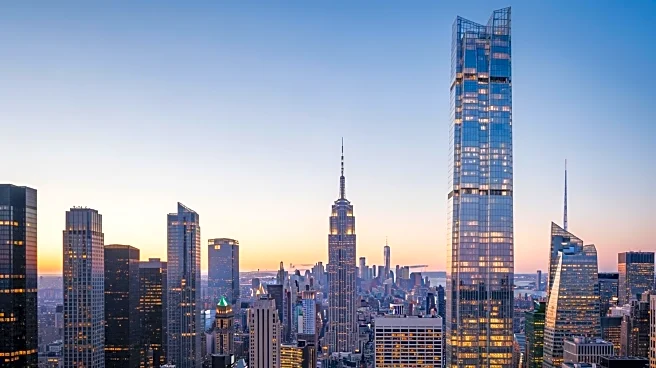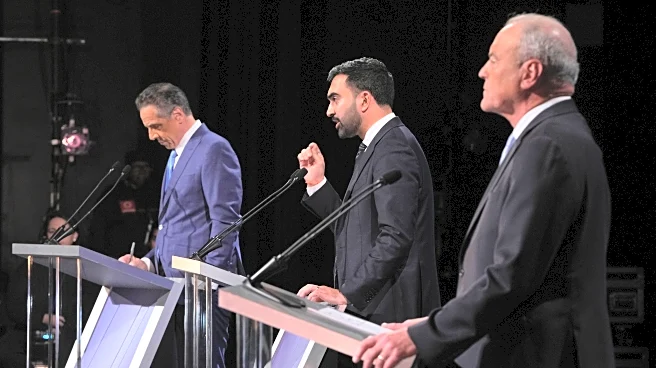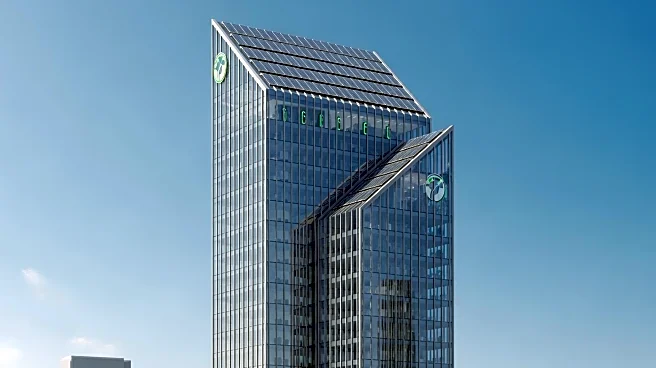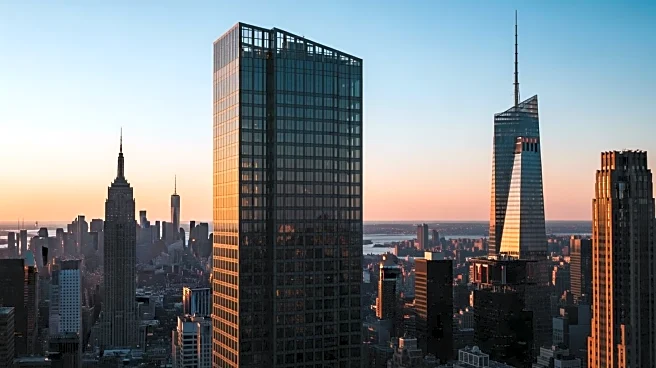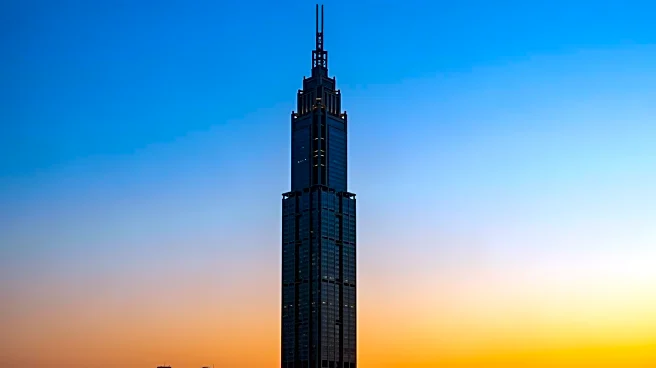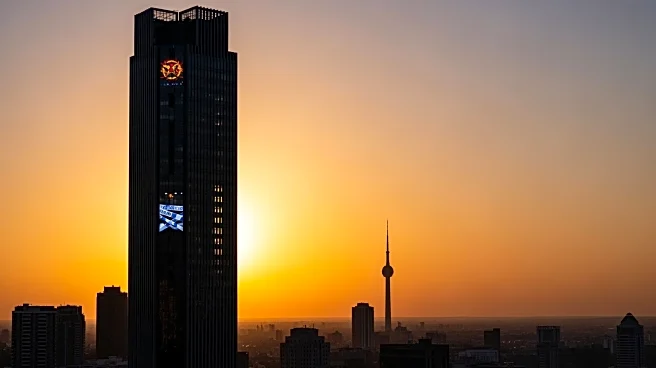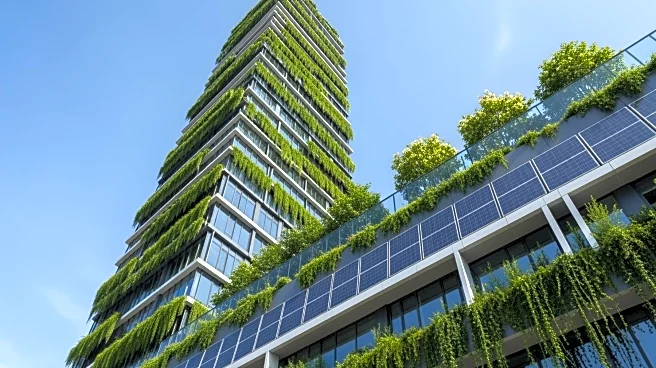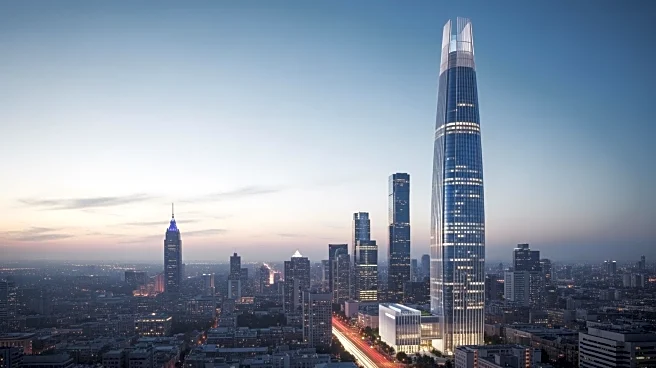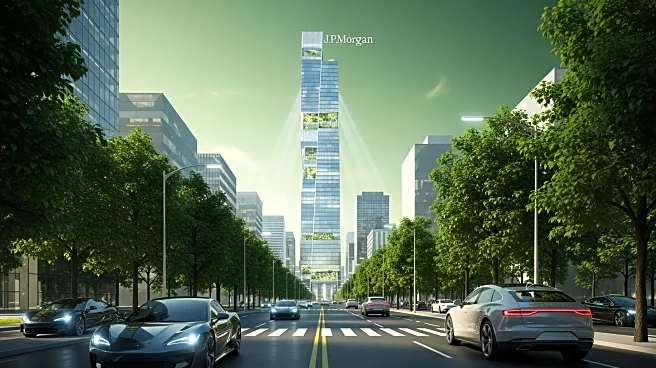What's Happening?
JPMorgan Chase has officially opened its new $3 billion headquarters at 270 Park Avenue in midtown Manhattan. The 60-story skyscraper, designed by British architect Lord Norman Foster, stands as a testament to the bank's commitment to New York City as the financial
capital of the world. The building, which took six years to complete, includes advanced features such as all-electric systems, a fitness center, onsite medical services, and a 19-restaurant food hall. The headquarters will house the majority of JPMorgan's 24,000-person workforce in New York City. CEO Jamie Dimon emphasized the building's permanence and its role in the bank's legacy during the ribbon-cutting ceremony.
Why It's Important?
The opening of JPMorgan Chase's new headquarters is a significant development for New York City's real estate and financial sectors. It symbolizes the city's resilience and recovery post-pandemic, as highlighted by New York Governor Kathy Hochul. The project underscores JPMorgan's long-standing relationship with New York, dating back over two centuries. The investment in such a large-scale project reflects confidence in the city's future as a global financial hub. This move could influence other financial institutions to invest in New York, potentially boosting the local economy and job market.
What's Next?
JPMorgan Chase plans to invest $1 billion into renovating its temporary headquarters at 383 Madison Avenue. Additionally, the bank is considering options for a recently acquired building at 250 Park Avenue, which may be used for additional office space or converted into a hotel. These developments indicate JPMorgan's ongoing commitment to expanding its presence in New York City, which could further solidify the city's status as a financial powerhouse.
Beyond the Headlines
The new headquarters is not just a building but a 'living organism of creativity,' according to meditation star Deepak Chopra, who advised on its health and wellness elements. This approach reflects a growing trend in corporate architecture that prioritizes employee well-being and sustainability. The building's design, including its high ceilings and signature scent, aims to enhance the work environment, potentially setting a new standard for office spaces in the financial industry.
